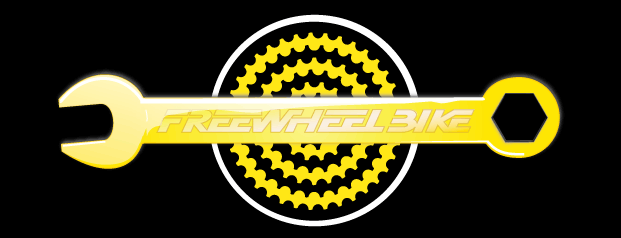
I spotted this rare gem at the Como Zoo. It's an old Pro-Flex Attack LE, probably 1996 vintage. A quick inventory informed me that everything on this steed is original. It has been retrofitted for trailer duty and has probably not seen off-road action since its first couple of days in operation. "How do you know that, mister smarty pants?" Those tabs that form the pivot behind the BB shell are teensy little things, goobered up with 6061 TIG welds, and probably re-aligned by hand after heat treating warped them out of functional alignment. Can you say "stressed aluminum?" Hopefully the owner won't be doing anything more drastic than bouncing down a few curbs between now and retirement. Most riders who ended up with one of these traded up to a real suspension bike right away, as the Pro-Flex only yielded about 1" of travel under optimal conditions. Optimal conditions for full travel included such variables as: ambient temperature above 70 degrees Farenheit; relative humidity below 46%; rider's body positioned so that 80% of his weight was directly above the rear axle; rider's middle name contains no unpronounced letters (as in "Geoffrey"); terrain consists of rolling hills and gentle corners, with no slopes exceeding 15% grade; soil composition less than 20% decayed material; absence of mythical beasts such as manticores, harpies, dryads, cool-headed Irishmen, and the like; and so on. These conditions were to be listed in the first appendix in the Pro-Flex manual, but to cut printing costs, the appendices were omitted from the final version of the manual.
Much has changed since 1996. I was recently putting together a new race bike that packed more technology than that bucket of bolts that took Buzz Aldrin to the moon. The frame alone was billowing tech so profusely that many of the other mechanics swooned to the floor. [We took this opportunity to hose them down with Tri-Flow and tell chimpanzees that they were smuggling bananas under their clothes--haven't you always wanted to do that?]
You would think that with all the technical advances coming out of the war rooms of the bike world, the little stuff wouldn't get overlooked. Engineers who are in charge of small frame parts would look at the new tech specs from component makers and what not. That's a safe assumption, right? That's the type of thinking that the crew of the Minnow engaged in before their fated three hour tour.


This is a rocket frame from a household name in cycling, and that is a brand new Deore XT derailleur. That pin on the aforementioned derailleur is hanging on for dear life to the little tooth on the derailleur tab, waiting for the first available impact to send the upper pulley into the cassette. Perhaps there will be no problems, but this is a RACE BIKE. It's designed to be pummeled mercilessly by skinny, leg-shaving dudes who can put out 250 watts for two hours straight over terrain that would lame a goat! This part will likely receive a beating the likes of which rented mules have rarely seen! And I'm a pessimist (as if you couldn't tell)!
Perhaps, again, there will be no problems. This machine might end up with a trailer behind it and never see more chain slap than that which occurs from dropping curbs slowly. The Pro-Flex has managed to survive this long (fifteen years!) without losing its rear end after all.
We really love engineers and appreciate their labors. Some of our pets are named after famous engineers (or maybe it's the other way around) (my dog is named after one of Saturn's moons) (OK, done sharing). Maybe the engineers at this particular company weren't getting along, because this sort of thing should be caught in house.
















